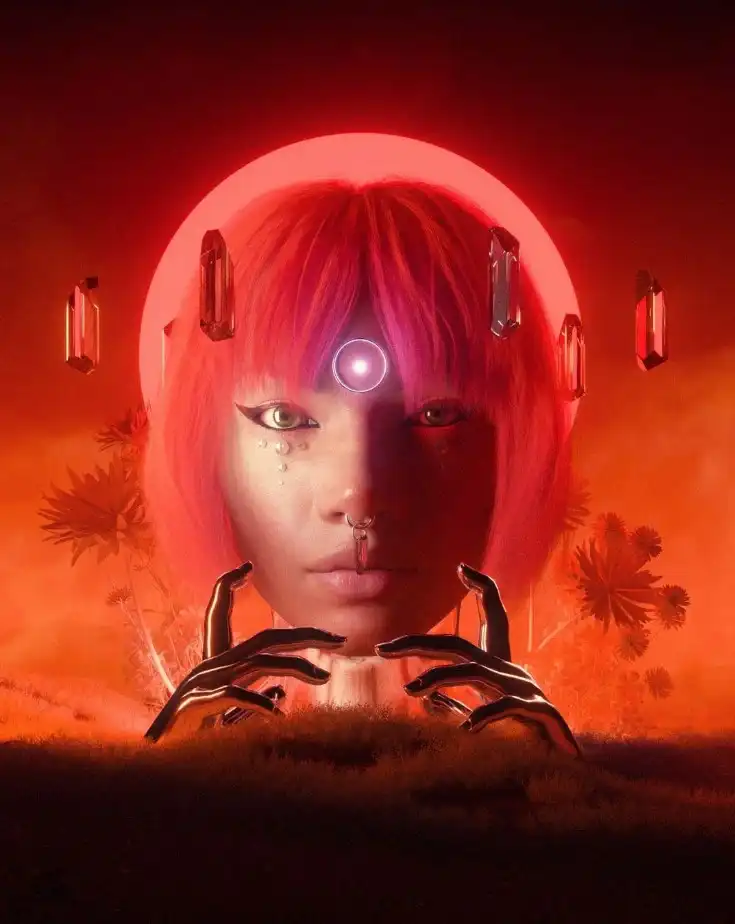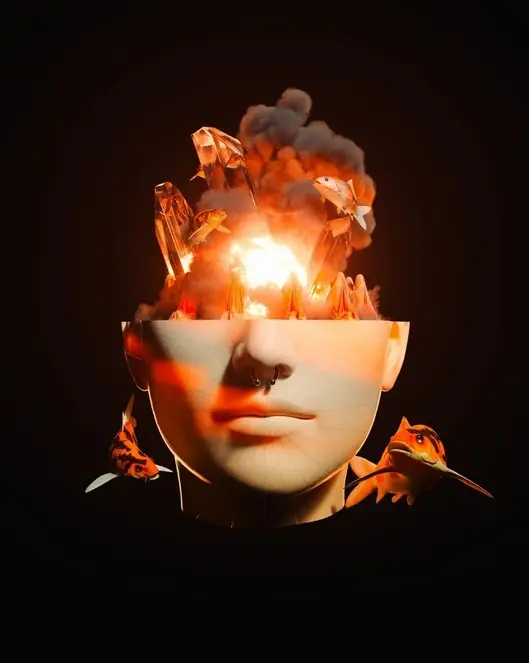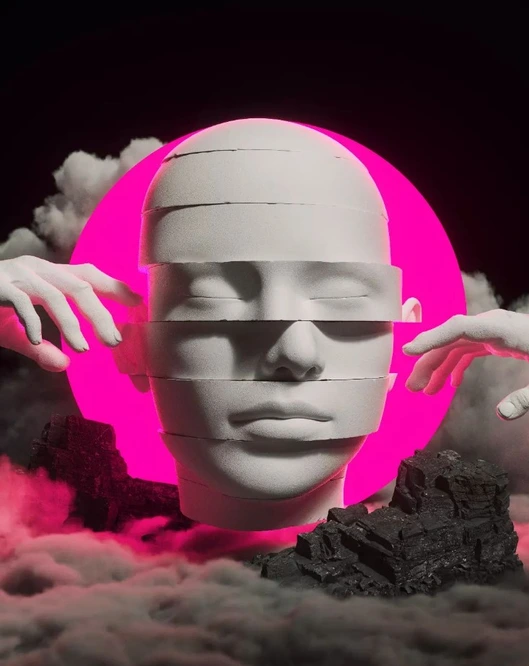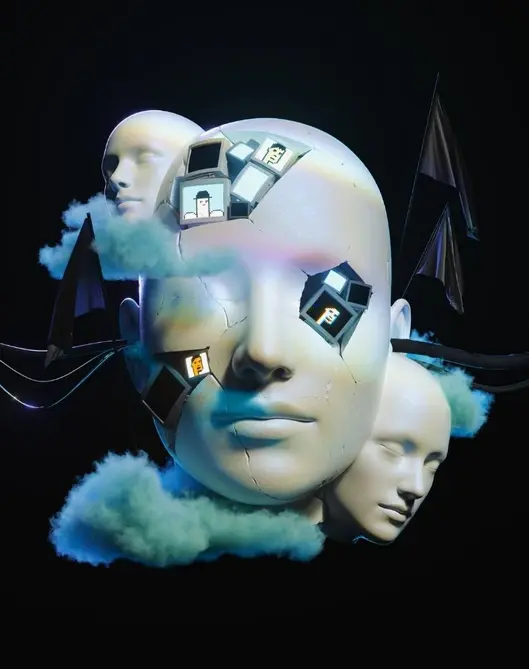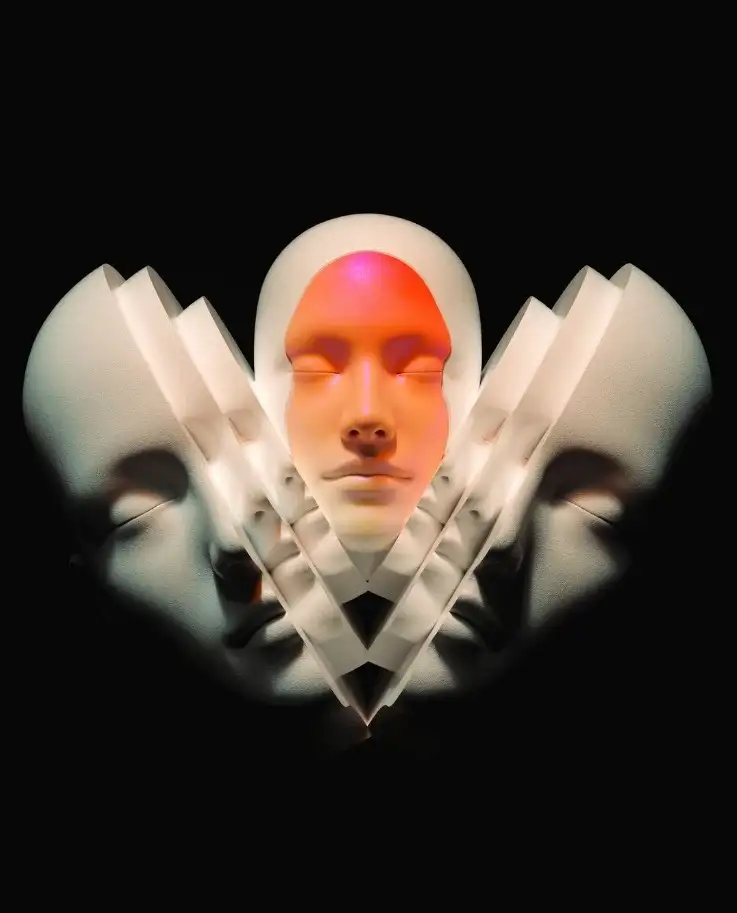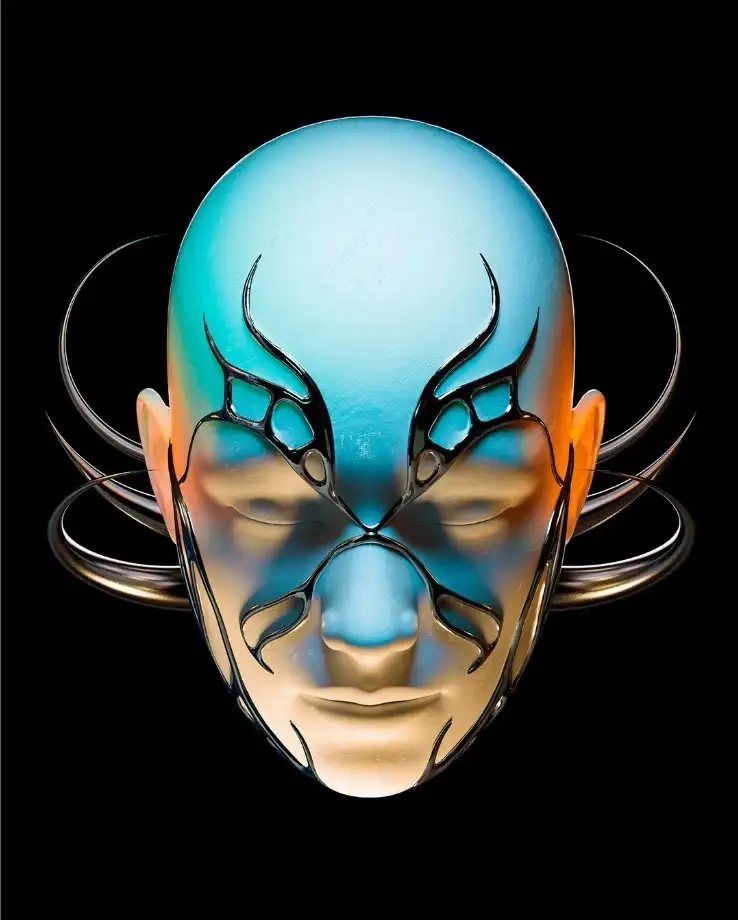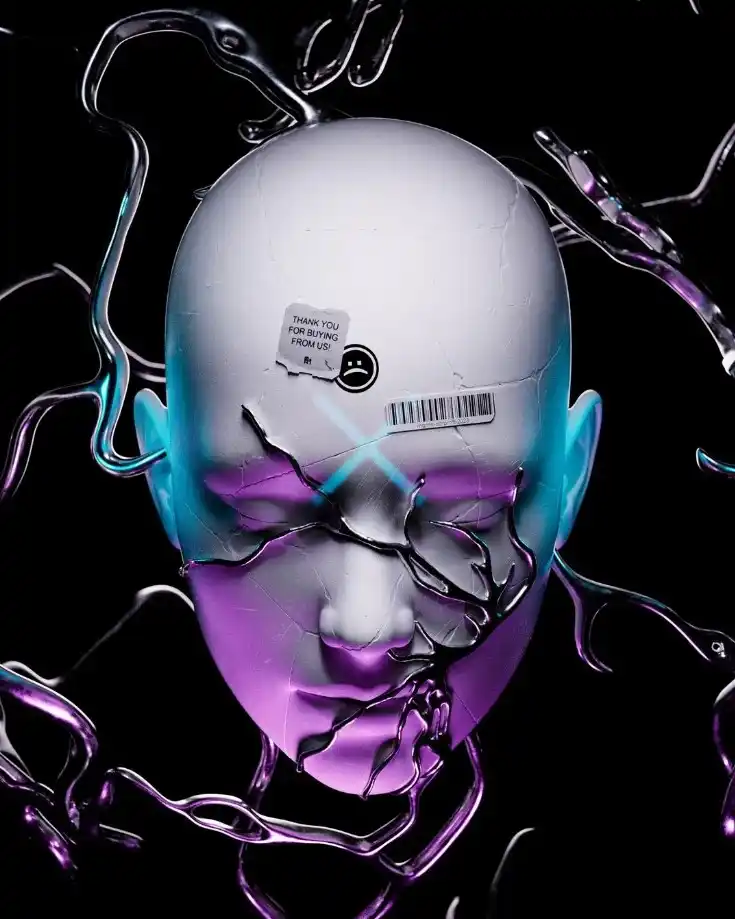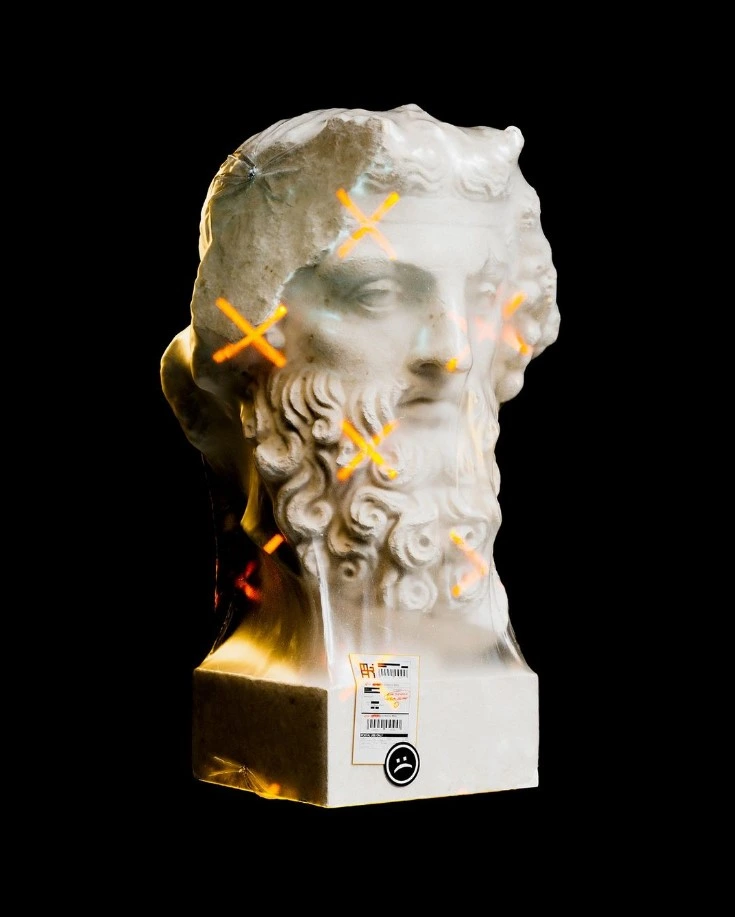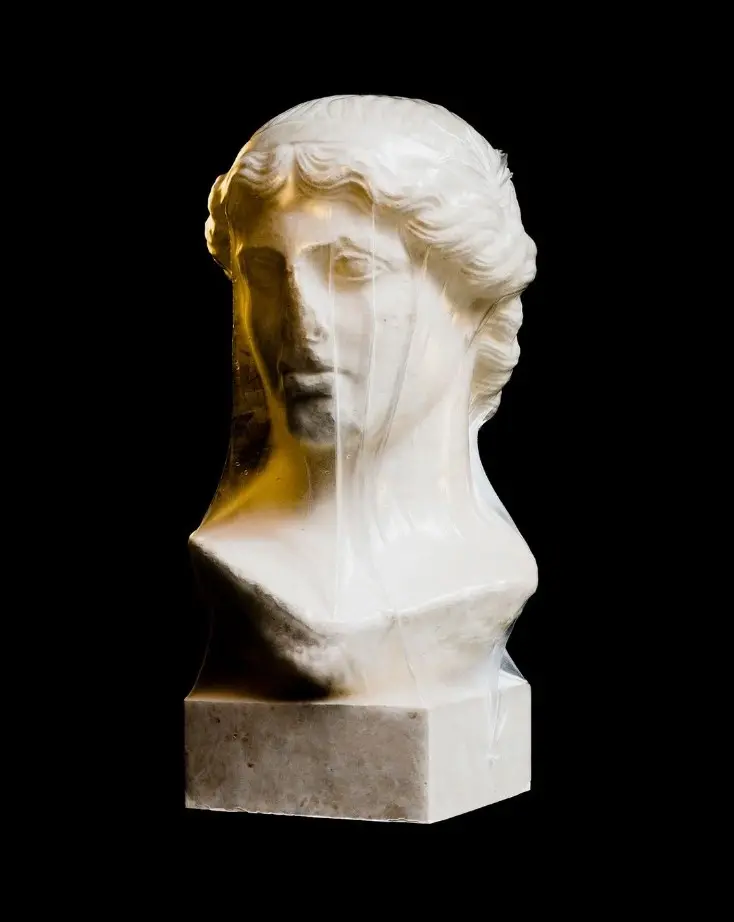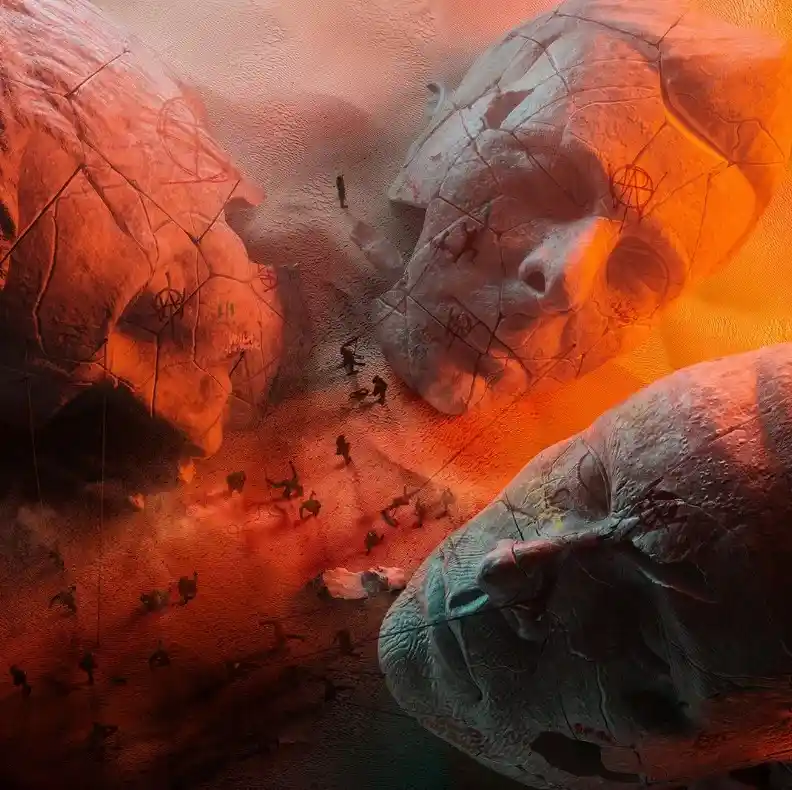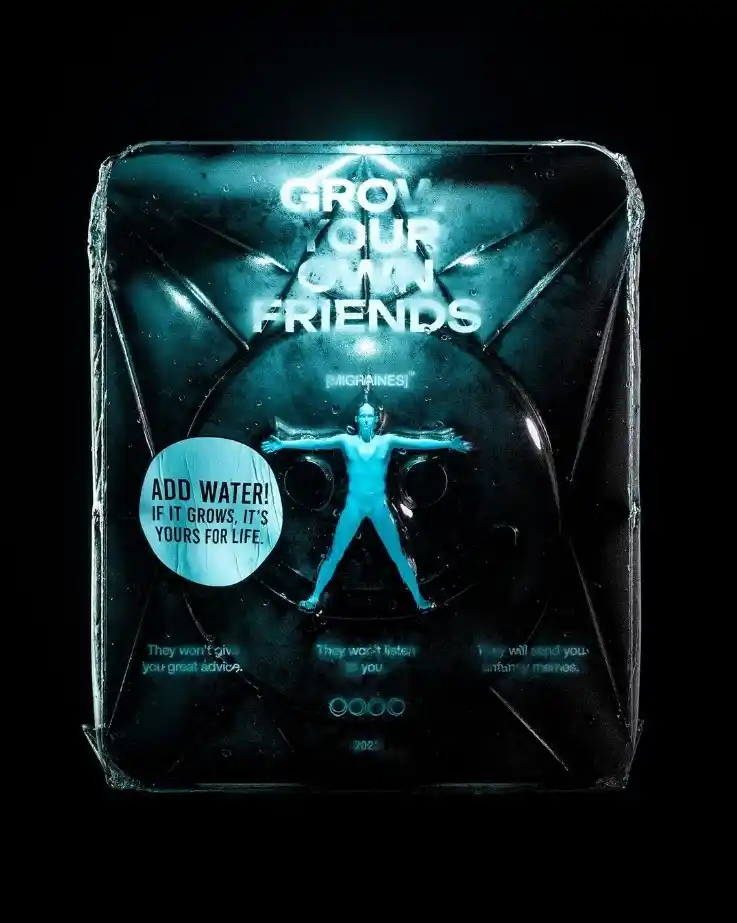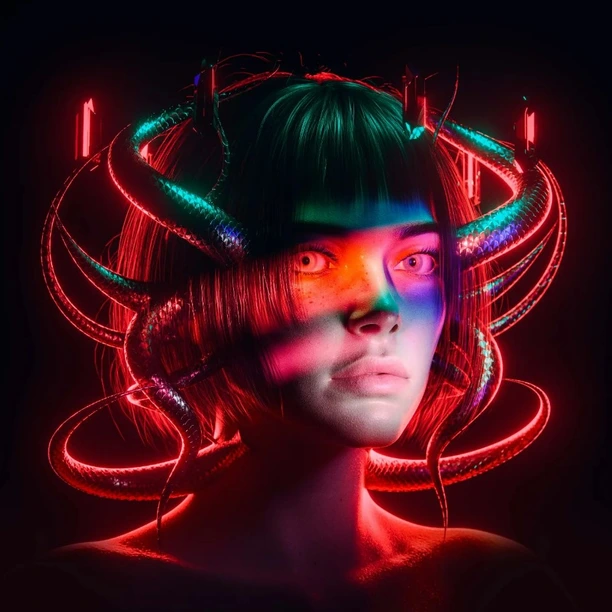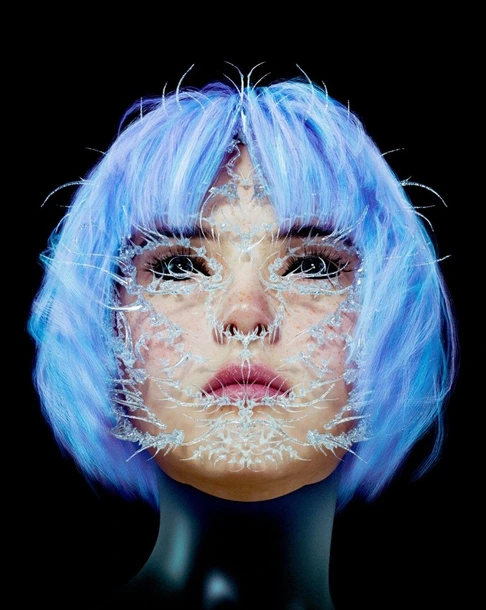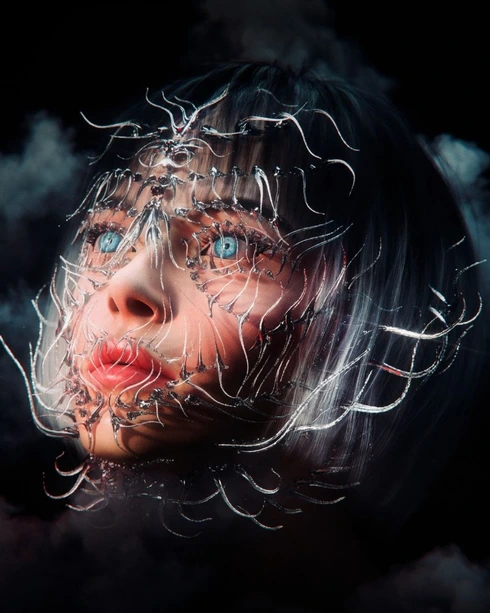I started doing digital art/3d art in college. I studied Communication Design, but I was very frustrated with how outdated and theoretical the degree was, so I started going the opposite way and tried to develop a skill that felt pretty up-to-date and with a lot of room for improvement. Digital art allowed (and still does) me to create whatever I wanted, without any limitations other than my own technical flaws at the time.
I’m constantly worried about being ahead of the curve, or at least keeping up with the latest trends – software-wise or even cultural. For that to happen, I feel like I need to work and develop new skills on a daily basis, which can take a toll on my well-being.
When it comes to client work, my most successful project was working on Muse’s “Will of The People” cover artwork. I feel like I was pushed way beyond what I knew at the time and that definitely made me a better artist. Also, I have always been a big fan of the band so this really was a dream come true. It didn’t feel real at the time and it still doesn’t feel real. My most successful personal project is my Migraines collection. It started at a pretty difficult time of my life and it has worked as a journal of my mental health ever since. Looking at the collection is looking at the improvement of my art and my mental health.
This happens on a regular basis. There’s a long way to go from a rough idea to its actual implementation so it’s common that I have to completely restart what I’m creating or, at least, adapting it so that it looks/feels better overall. At the same time, I’m a strong believer that not every piece of art I create has to be perfect, therefore, I sometimes tend to force myself to finish an artwork, just for the sake of completing a task. It’s very important for me to create a brand-new piece of art almost every day.
I would say there are fewer limitations. For me, there are no limits when creating digital art.
The concept for the heads came up when I was facing some mental health issues. At the time each head was a representation of a different state of mind that I was going through. I’m at a much better place right now, but I kept the same visual language as I feel like it still has a lot to explore!
To be honest, I have distanced myself from any traditional technique. Not that I don’t appreciate or think that those techniques aren’t valid, I just found my place in digital art.
Transforming an idea into an actual functional artwork, through 3D software, is definitely the most challenging part of digital art, for me.
Thankfully, ever since I started my digital art journey, I’ve been involved with the music industry. I’ve worked on multiple album covers, and it’s usually a fun process. Trying to match my interpretation of a briefing with the expectations of the clients is always a challenge, but it’s exciting. In the future, I’d like to work on a couple of projects in the fashion world.
I feel like the respect for digital artists has completely changed in the last few years. When I was first starting – back in 2017/2018 – I felt like I was just a guy with a computer that could do some 3D things, but now, perhaps with the help of NFTs and the rise of digital art, people started looking at digital artists in a different way. Almost as if digital art started to be seen as a “true” art form. As I mentioned before, I feel like the biggest challenge will be keeping up with all the technological innovations and trends.
It sounds cliché, but the best advice I can give is to work hard. Keep improving your skills and share your work with the world. You never know who’s watching.
